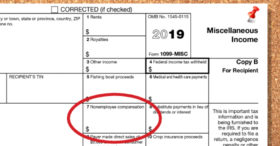As we all know, medical services and prescription drugs are expensive. You may be able to deduct some of your expenses on your tax return but the rules make it difficult for many people to qualify. However, with proper planning, you may be able to time discretionary medical expenses to your advantage for tax purposes.
The basic rules
For 2019, the medical expense deduction can only be claimed to the extent your unreimbursed costs exceed 10% of your adjusted gross income (AGI). You also must itemize deductions on your return.
If your total itemized deductions for 2019 will exceed your standard deduction, moving or “bunching” nonurgent medical procedures and other controllable expenses into 2019 may allow you to exceed the 10% floor and benefit from the medical expense deduction. Controllable expenses include refilling prescription drugs, buying eyeglasses and contact lenses, going to the dentist and getting elective surgery.
In addition to hospital and doctor expenses, here are some items to take into account when determining your allowable costs:
1. Health insurance premiums. This item can total thousands of dollars a year. Even if your employer provides health coverage, you can deduct the portion of the premiums that you pay. Long-term care insurance premiums are also included as medical expenses, subject to limits based on age.
2. Transportation. The cost of getting to and from medical treatments counts as a medical expense. This includes taxi fares, public transportation, or using your own car. Car costs can be calculated at 20¢ a mile for miles driven in 2019, plus tolls and parking. Alternatively, you can deduct certain actual costs, such as for gas and oil.
3. Eyeglasses, hearing aids, dental work, prescription drugs and professional fees. Deductible expenses include the cost of glasses, hearing aids, dental work, psychiatric counseling and other ongoing expenses in connection with medical needs. Purely cosmetic expenses don’t qualify. Prescription drugs (including insulin) qualify, but over-the-counter aspirin and vitamins don’t. Neither do amounts paid for treatments that are illegal under federal law (such as marijuana), even if state law permits them. The services of therapists and nurses can qualify as long as they relate to a medical condition and aren’t for general health. Amounts paid for certain long-term care services required by a chronically ill individual also qualify.
4. Smoking-cessation and weight-loss programs. Amounts paid for participating in smoking-cessation programs and for prescribed drugs designed to alleviate nicotine withdrawal are deductible. However, nonprescription nicotine gum and patches aren’t. A weight-loss program is deductible if undertaken as treatment for a disease diagnosed by a physician. Deductible expenses include fees paid to join a program and attend periodic meetings. However, the cost of food isn’t deductible.
Dependent expenses
You can deduct the medical costs that you pay for dependents, such as your children. Additionally, you may be able to deduct medical costs you pay for other individuals, such as an elderly parent. If you have questions about medical expense deductions, contact us.
© 2019 Covenant CPA









